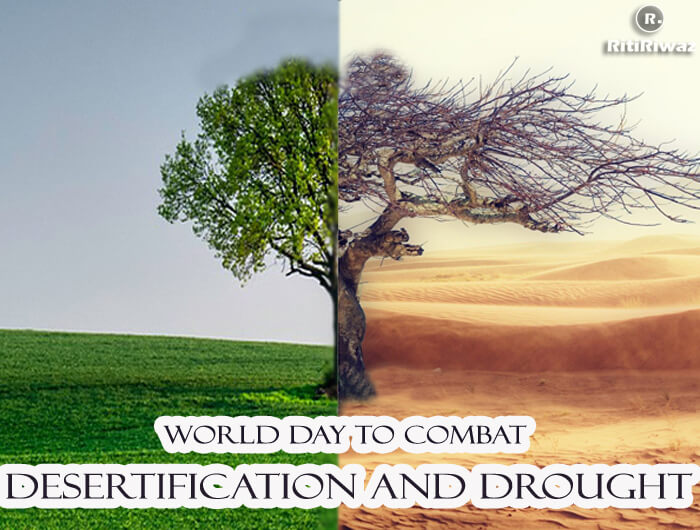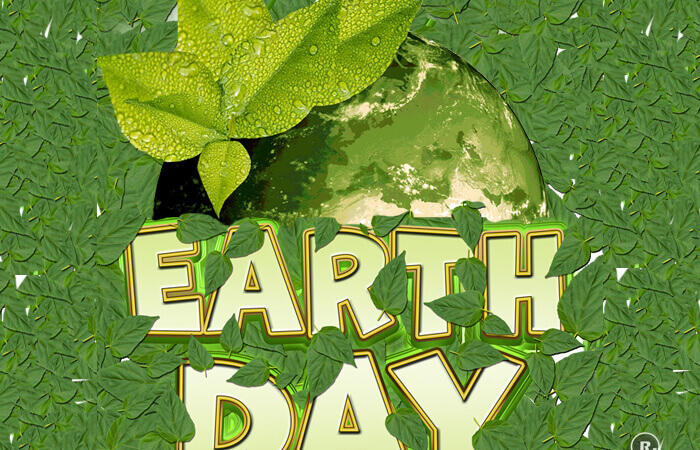World Day to Combat Desertification and Drought – 17 June

World Day to Combat Desertification and Drought is observed on 17th June every year, to raise global awareness of desertification and to promote solutions to this worldwide problem. Desertification and drought are alarming issues increasing at a huge pace all around the globe because of various activities carried out by humans.
The day highlights various methods to prevent desertification, recover from droughts, and promote international efforts to fight these issues.
History
The year 1973 saw the end of a five-year-long drought in Sub-Saharan Africa that killed more than 200,000 people and millions of animals. The severity prompted numerous global discussions and initiatives over the next two decades to address these grave societal challenges—drought and desertification.
On June 17, 1994, the UN Convention to Combat Desertification (UNCCD) was adopted in Paris as a global effort to fight desertification and drought, primarily in Africa. India was the signatory to United Nations Convention to Combat Desertification in Paris in 1994. Six months later, the UN General Assembly decided that, from 1995, June 17 would be observed as The World Day to Combat Desertification and Drought to increase public awareness of these vital environmental concerns. Twenty-five years later, this year, the day has been renamed Desertification and Drought Day.
In 2015, the fight against land degradation was rejuvenated globally as the UN General Assembly approved the Sustainable Development Goals (SDGs). Out of 17 SDGs, the UNCCD started focusing on SDG 15—life on land. More specifically, the convention deals with target 15.3—one of 169 SDG targets—which says “By 2030, combat desertification, restore degraded land and soil, including land affected by desertification, drought, and floods, and strive to achieve a land degradation-neutral world”.
What is Desertification
Desertification does not mean the expansion or creation of deserts. It is a process where the quality of land gets degraded—through the clearing of tree covers, unplanned and over-exploitation of land resources, erosion of hills and river banks, chemical pollution of land, and salinity intrusion. It occurs because dryland ecosystems, which cover over one-third of the world‘s land area, are extremely vulnerable to overexploitation and inappropriate land use.
Drought is also one of the drivers of desertification, a process that occurs slowly through loss of soil productivity. Strong policies, innovative farming practices – and responsible soil management – can help reduce or prevent the process. This is part of the reason that the UN’s World Day to Combat Desertification and Drought is observed, to raise awareness and bring attention to those communities being affected hardest by these issues.
Desertification can be prevented through policy interventions at local as well as national levels, with the active participation of all stakeholders, especially local communities, promoting natural regeneration of ecosystems, switching to better land and water management practices, creating efficient irrigation and drainage facilities, adopting sustainable agricultural practices, and exploring alternate livelihoods to reduce the pressure on land and natural resources.
The main reasons that cause desertification in India are:
- Water erosion (10.98 percent)
- Wind erosion (5.55 percent)
- Human-made/settlements (0.69 per cent)
- Vegetation degradation (8.91 percent)
- Salinity (1.12 percent)
- Others (2.07 percent)
Awareness of this issue is the first step toward effective action that mitigates the devastating impacts of water scarcity. Support and share the World Day to Combat Desertification and Drought Day to contribute to the first step of raising awareness about the severity of this global issue.
Celebrate this World Day to combat desertification and drought by investing in your future, by investing in the soil. Save the environment.
Suggested Read: Important Days In June






